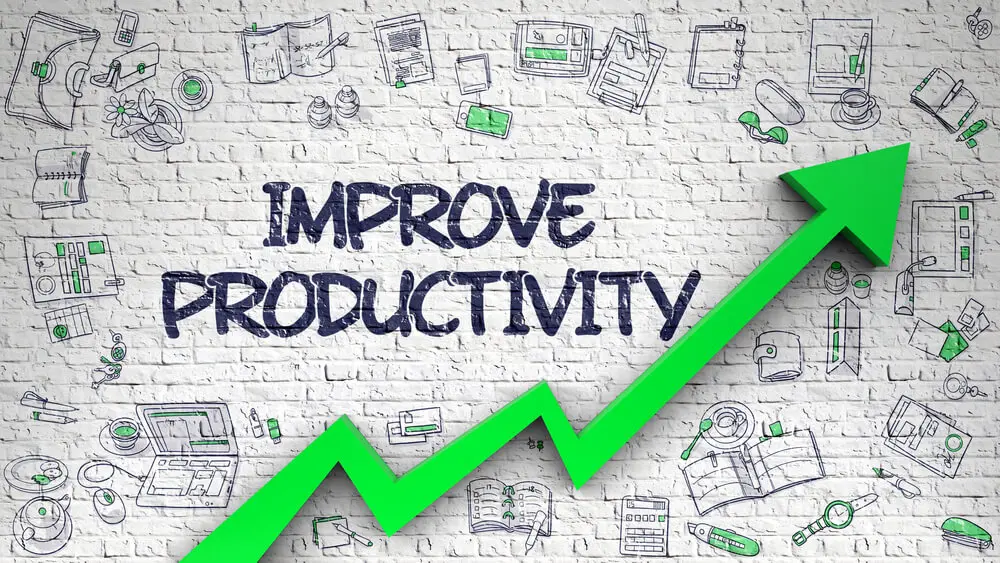Education & Career Trends: December 19
Curated by the Knowledge Team of ICS Career GPS

- Excerpts are taken from an article published on psychologytoday.com.
In a world that constantly demands our attention and energy, the pursuit of a more productive life has become a universal goal. Whether you’re a career-driven professional, a student with academic aspirations, or someone simply looking to enhance their daily routine, the desire to make the most out of every moment is a shared sentiment. But where do you start on the path to a more productive and fulfilling life?
Some irrational beliefs that can block us from getting stuff done:
- I must get it all done at once.
- I must know exactly how I’ll accomplish all the steps in advance before I start.
- I must do it all perfectly.
- It must not be difficult to get it all done.
- I must not feel anxious about getting everything done.
Following is an example of how to uproot one of these common irrational beliefs using the Three-Minute Exercise (TME):
A. Activating event: Stuff to do.
B. Irrational belief: It must be easy to accomplish stuff.
C. Undesirable behavioral consequences: Procrastination.
D. Disputing/questioning the irrational belief: What is the evidence it must be easy?
E. Effective new thinking: There is no reason accomplishing stuff must be easy. It’s often frustrating, unpleasant, and uncomfortable. I don’t like this state of affairs but I can stand what I don’t like, I’m just standing it poorly when I whine about the difficulty. I have accomplished difficult tasks in the past and I will accomplish difficult tasks in the future. The solution starts with the first step: get started and let momentum carry you through. It’s not having stuff to do that forces me to procrastinate, but rather it’s my irrational “must” thinking that is at the root of my procrastination. With much work and practice, I can learn to unconditionally accept difficulty and discomfort, although I’ll never like it.
F. New behaviour: Unconditionally accepting the difficulty and moving ahead on my tasks for the day.
10 practical steps to be more accomplished and efficient
1. Schedule activities the night before the next day when you wish to accomplish certain tasks. Include the best time to start the activity and a reasonable amount of time to set aside for it.
2. Attach each activity to a reward or penalty. If you’ve completed it, reward yourself, e.g., eating your favourite food. If you’ve failed to complete the activity, levy a penalty.
3. Make yourself responsible to a friend or relative. Every night, inform them what you wish to accomplish the next day. Then let them know how you did that day. Then again report your goals for the next day.
4. Use the Three-Minute Procrastination Buster. Choose to spend three minutes working on something, even though three minutes may not seem like a great accomplishment. The idea is to use the momentum to work for you. You may stop after three minutes, but at least you’ve taken the first step and have gotten a start. Yet you may find once you get the ball rolling you prefer to do more than only three minutes even much more as a result of the momentum you’ve developed.
5. Use Premack’s principle. Psychologist David Premack recommends using a higher-frequency behaviour to reinforce a lower-frequency behaviour. For example, if you frequently have a cup of coffee and you infrequently make your bed, don’t allow yourself to have the coffee until you’ve made your bed. This way you’re rewarding the unpleasant behavior with the pleasant one making the unpleasant one seem more desirable in the long term.
6. Use ranking. List the activities you’d like to accomplish on a given day. Write an “A” next to the most important, a “C” next to the least important, and then a “B” next to the rest. When you have time to address your activities, do the A’s first, then the B’s, then the C’s.
7. Use cueing. Suppose you’ve delayed paying your rent. Before you go to bed, put a blank check and a pen out on your desk. Then when you arise in the morning it’s there staring you in the face as a reminder and leaves an easy step to complete.
8. Remove distractions. Remove anything that distracts you from your task. Put your phone away shut off the ringer, and stay out of the kitchen and TV room. Pull down your shades if your workroom faces a busy street. Having fewer distractions can help you stay focused.
9. Give yourself deadlines. I did not allow myself to eat lunch until I had worked at least four hours on my dissertation each morning. As time passed and I got hungrier and hungrier, my incentive to do the work increased.
10. Do the most onerous task first. Get it out of the way immediately and avoid it hanging over your head like the sword of Damocles. Mark Twain’s variation, called Eat the Frog Method, starts with a metaphor: if your job is to eat live frogs, start early in the morning and eat the largest frog first. Then all other jobs for the day will appear easy in comparison. The lesson: do your most challenging tasks first.
…
Have you checked out yesterday’s blog yet?
What Is the Purpose of an Internship?
(Disclaimer: The opinions expressed in the article mentioned above are those of the author(s). They do not purport to reflect the opinions or views of ICS Career GPS or its staff.)
Like this post? For more such helpful articles, click on the button below and subscribe FREE to our blog.




One Reply to “10 Steps for a More Productive Life”